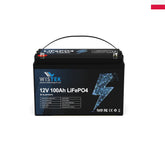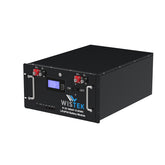Is the Battery Industry a Lucrative Opportunity
In today’s energy-conscious world, the battery industry stands at the intersection of innovation and necessity. Whether it's electric vehicles, smartphones, or renewable energy storage, the demand for batteries continues to grow at an unprecedented pace. As we enter an era driven by sustainability and digital transformation, many investors and entrepreneurs are asking the same question: Is the battery industry a lucrative opportunity? The short answer is yes—but success depends on timing, strategy, and understanding the key dynamics of the market.
- The Rise of the Battery Industry
- Battery Technology Innovation and Its Impact on Profitability
- The Global Supply Chain of Battery Components
- Battery Manufacturing and Scaling Challenges
- Competitive Landscape of the Battery Industry
- Investment Opportunities in the Battery Sector
- Battery Recycling and Second Life Applications
- Government Policies and Incentives
- Challenges That Could Impact Profitability
- The Future Outlook of the Battery Industry
- Is the Battery Industry a Lucrative Opportunity
The Rise of the Battery Industry
The battery industry has undergone a major transformation over the last two decades. What was once a niche segment confined mostly to consumer electronics has now evolved into a critical pillar of multiple trillion-dollar industries—automotive, renewable energy, and grid infrastructure.
Driving Forces Behind Battery Market Growth
Several megatrends are fueling the explosive growth of the battery industry, including:
Electrification of Transport: The EV (electric vehicle) revolution, led by Tesla, BYD, and traditional automakers, has created skyrocketing demand for lithium-ion batteries.
Decarbonization Goals: Governments worldwide are investing in green energy and banning internal combustion engines, further stimulating battery demand.
Energy Storage Solutions: As solar and wind power rise, batteries are crucial for stabilizing intermittent power sources.
>>See also How to Tell if a Smart UPS 2200 Battery Can Be Replaced While Powered On
Battery Technology Innovation and Its Impact on Profitability
Technological innovation is at the heart of the battery industry’s profitability. From lithium-ion to solid-state and sodium-ion alternatives, companies that innovate effectively can unlock high margins and market dominance.
Key Battery Types and Their Market Relevance
Lithium-Ion Batteries: Currently the gold standard, dominating electric vehicles and consumer electronics.
Solid-State Batteries: Promise higher energy density and safety; under development by Toyota, QuantumScape, and others.
Sodium-Ion Batteries: Emerging as a cost-effective alternative with less reliance on rare minerals.
Investing or starting a venture in the battery industry often means betting on technology that could either revolutionize storage or quickly become obsolete.
The Global Supply Chain of Battery Components
Understanding the battery value chain is essential to grasp the industry's profitability. This includes mining raw materials, producing battery cells, assembling packs, and recycling.
Key Components and Suppliers
Lithium: Mined in countries like Chile, Australia, and Argentina.
Cobalt and Nickel: Mostly sourced from the Democratic Republic of Congo and Indonesia.
Anodes and Cathodes: The core of battery chemistry; controlled largely by East Asian manufacturers.
Disruptions in any part of this chain—from geopolitical issues to environmental regulations—can directly impact margins and production timelines.
Battery Manufacturing and Scaling Challenges
While demand for batteries is booming, scaling manufacturing presents its own set of hurdles. These include capital intensity, environmental concerns, and the need for specialized labor and facilities.
Gigafactories and Vertical Integration
Companies like Tesla and CATL have invested heavily in "gigafactories" to control the entire supply chain and reduce per-unit costs. These massive facilities produce batteries at scale, improving profitability through economies of scale.
Environmental and Regulatory Hurdles
Battery production is resource-intensive and not without ecological consequences. Regulatory scrutiny is increasing, especially concerning water usage and carbon emissions, which could raise costs.
Competitive Landscape of the Battery Industry
The battery industry is highly competitive, with major players dominating specific market segments. However, room still exists for startups and niche players who offer disruptive technologies or specialized services.
Leading Battery Companies to Watch
CATL (China): The world’s largest battery producer, supplying Tesla and other automakers.
LG Energy Solution (South Korea): Strong presence in EV and stationary storage sectors.
Panasonic (Japan): A key partner for Tesla with a focus on innovation.
Startups like QuantumScape, Solid Power, and SES are developing solid-state battery technologies that could reshape the market if proven commercially viable.
Investment Opportunities in the Battery Sector
From stocks and ETFs to private equity and crowdfunding, there are numerous ways to invest in the battery industry.
Public Market Investments
Several ETFs focus on battery technology, including:
LIT (Global X Lithium & Battery Tech ETF)
BATT (Amplify Advanced Battery Metals and Materials ETF)
Investors should evaluate a company’s access to raw materials, intellectual property, and partnerships with automakers when choosing stocks.
Private Ventures and Startups
While riskier, private investments in battery startups offer the potential for exponential returns. Angel investors and venture capitalists are increasingly targeting companies that solve specific pain points like battery recycling or rapid charging.
Battery Recycling and Second Life Applications
As battery use increases, so does the need for sustainable disposal and reuse. This emerging sub-sector is becoming one of the most promising areas for profitability in the battery industry.
Economics of Battery Recycling
Recycling recovers valuable materials like lithium, cobalt, and nickel, which are becoming more expensive and harder to mine. Companies like Redwood Materials are pioneering closed-loop systems that aim to make battery production more sustainable and cost-effective.
Second Life for EV Batteries
EV batteries that no longer meet automotive standards often still have 70–80% capacity left. These can be repurposed for grid storage, home energy solutions, or even powering backup systems, opening up new business models.
Government Policies and Incentives
Governments worldwide are deploying legislation and financial incentives to foster local battery production and reduce dependence on foreign suppliers.
U.S. Inflation Reduction Act (IRA)
This landmark legislation includes billions in subsidies for EV and battery manufacturers who produce domestically or in trade-friendly nations. It significantly impacts the location decisions of new battery plants and suppliers.
EU Battery Regulation
Europe is mandating stricter guidelines on battery recycling, carbon footprint labeling, and supply chain transparency, pushing companies to innovate sustainably.
Challenges That Could Impact Profitability
Despite its promise, the battery industry faces several challenges that could limit profitability if not properly managed.
Volatility in Raw Material Prices
Lithium and cobalt prices can fluctuate due to supply-demand mismatches, geopolitical tensions, or cartel-like behavior by major producers. These fluctuations can squeeze margins and complicate planning.
Technological Disruption
As with all tech-driven industries, a sudden leap forward in a different energy storage method—such as hydrogen fuel cells—could make current battery technologies less relevant.
Talent Shortages
The rapid expansion of battery production requires specialized engineers, chemists, and technicians. Talent shortages could delay projects and raise labor costs.
>>See also How Much Energy Can You Get from a 100Ah 48V Battery
The Future Outlook of the Battery Industry
Looking ahead, the battery industry is poised for further expansion. Analysts forecast the global battery market to surpass $400 billion by 2035. But beyond sheer growth, the industry will likely experience a transformation in how batteries are designed, built, and used.
Integration With Smart Grids and AI
Smart energy systems that integrate AI with battery storage will allow for dynamic energy management at residential and industrial levels. This creates new value propositions and business models, such as energy-as-a-service.
Urban Air Mobility and New Frontiers
As drones and flying taxis gain momentum, high-density batteries will be a prerequisite for safe and efficient operations. This opens up a new vertical within the battery industry that few companies currently serve.
Blockchain and Battery Tracking
Digital tools like blockchain can provide full traceability of battery materials, ensuring ethical sourcing and compliance with global standards. This could be a significant value add in regions with strict environmental, social, and governance (ESG) mandates.
Is the Battery Industry a Lucrative Opportunity?
To circle back to our original question—is the battery industry a lucrative opportunity?—the evidence is compelling. From strong market growth and technological innovation to government support and emerging business models, the battery industry presents one of the most promising landscapes for long-term profitability. However, this opportunity comes with challenges that require expertise, strategic planning, and adaptability.
Whether you are an investor, entrepreneur, or policy-maker, understanding the multifaceted nature of the battery industry is key to making informed and profitable decisions. With the right approach, tapping into this dynamic sector could indeed be one of the most rewarding ventures of the decade.
As you evaluate your entry point, remember that the battery industry is not just about energy—it’s about powering the future.
























Leave a comment
All blog comments are checked prior to publishing